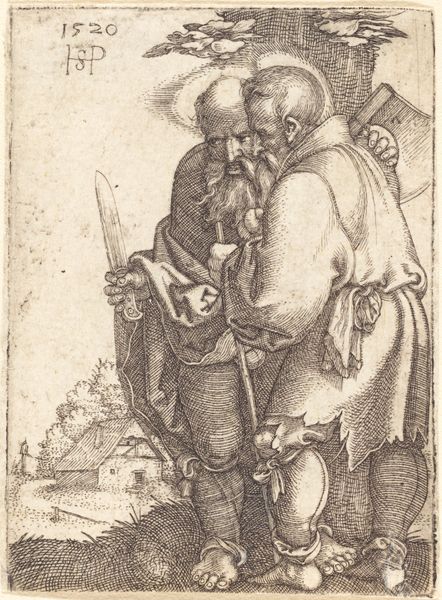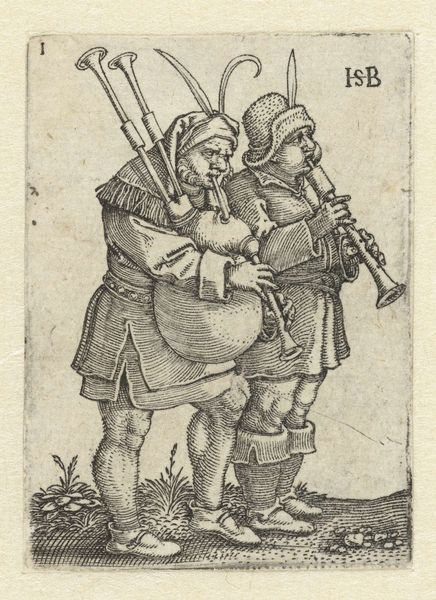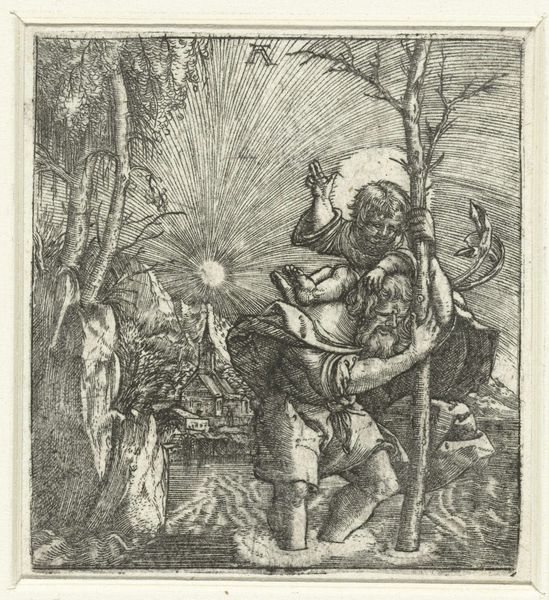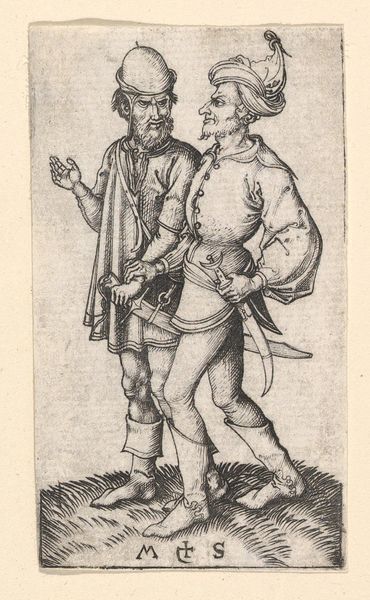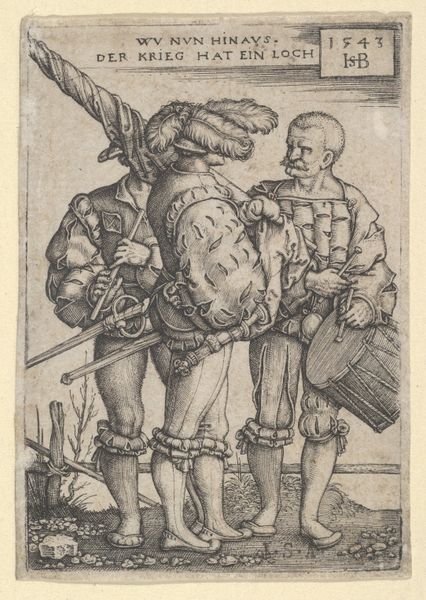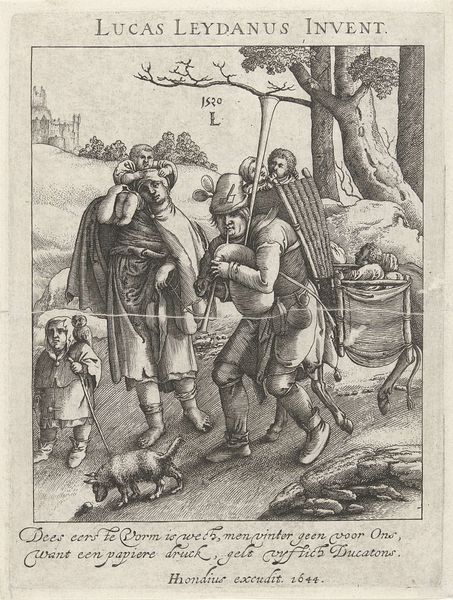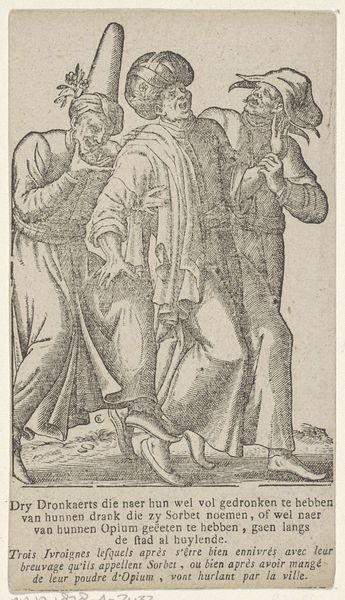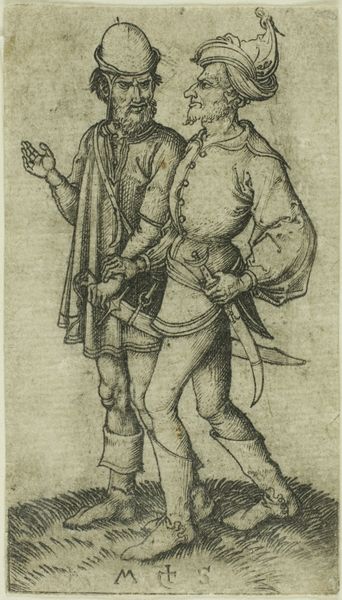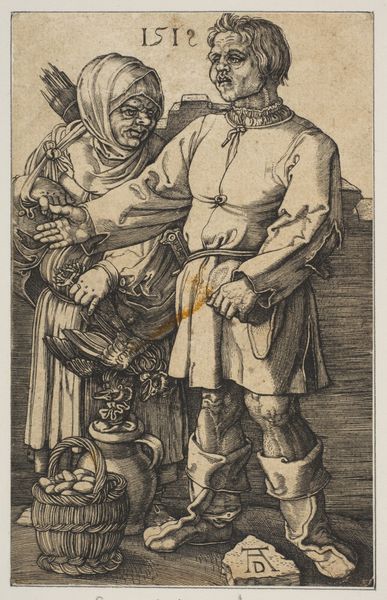
drawing, print, engraving
#
drawing
#
narrative-art
# print
#
figuration
#
history-painting
#
northern-renaissance
#
engraving
Dimensions: height 62 mm, width 45 mm
Copyright: Rijks Museum: Open Domain
Editor: This engraving, titled "Bartolomeüs en Mattias," was created around 1520 by Sebald Beham. It's amazing how much detail he achieves in such a small print. I find their postures rather intriguing. How do you interpret this work, focusing on its formal elements? Curator: Note how the figures dominate the pictorial space, almost entirely obscuring the landscape. Beham uses densely packed, linear hatching to sculpt form and create tonal variations, primarily visible in the robes and musculature. Notice how their placement toward the front flattens depth, drawing the eye to the interaction between the two figures, locking them in intimate communication. Do you observe any tensions within this close arrangement? Editor: Now that you mention it, the contrasts seem intentional: the detailed rendering of the foreground compared to the simplified background and the dynamic angles and texture created by their robes which opposes their static posture. What would those suggest? Curator: Precisely. The dramatic folds serve to amplify movement and texture which introduces vitality in the space. Notice, for instance, the sharp, jagged lines in the garments in contrast to the smoothness of their bald heads. In Northern Renaissance prints, the tactile quality was paramount to evoke a strong sensory experience for the viewer. Editor: This is so helpful in prompting me to observe the subtle contrasts and how the textures interact, so in turn, I now look at it differently, more three-dimensionally and texturally, despite its initial compact and flatter visual appearance. Curator: It's about looking closely at the lines, the forms, and how they interact within the framed space. These formal components create layers of meaning and understanding of the artist’s choices. I have to agree. Looking closely does lead one to further appreciation of its masterful composition!
Comments
No comments
Be the first to comment and join the conversation on the ultimate creative platform.
